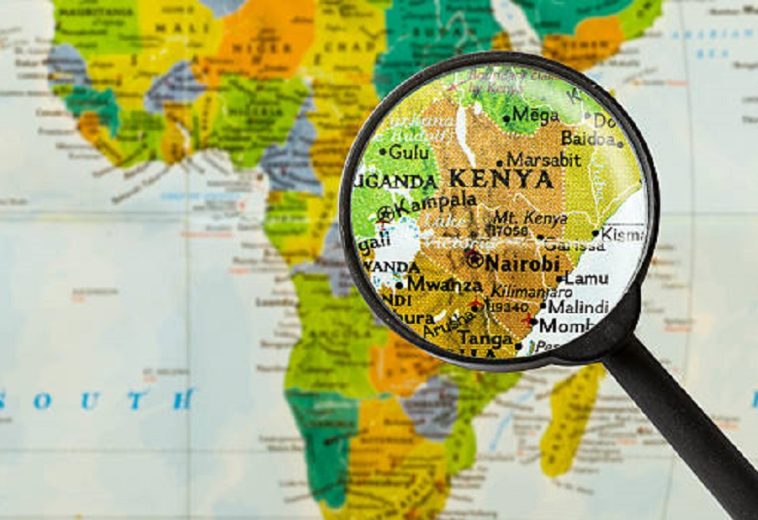“Disasters don’t discriminate, and neither should our response. Youth are not just the leaders of tomorrow; they are also the leaders of today,” stated Mami Mizutori, the UN Special Representative for Disaster Risk Reduction. This powerful sentiment resonates deeply as the world observes the International Day for Natural Disaster Reduction, with the 2024 theme “Empowering the Next Generation for a Resilient Future.” The focus on youth leadership highlights the critical role young people play in disaster risk reduction (DRR) and resilience building, particularly in Africa, where the impacts of climate change and natural disasters pose significant challenges.
The Growing Role of Youth in DRR Across Africa
Natural disasters are becoming more frequent and severe, with Africa bearing a disproportionate share of their impacts. According to the United Nations Office for Disaster Risk Reduction (UNDRR), the continent has experienced over 300 recorded disasters in recent years, affecting millions and causing substantial economic losses. Young people, who make up a considerable portion of the African population—more than 60% in many countries—are uniquely positioned to lead in disaster preparedness and resilience-building efforts.
Africa’s youth population, estimated at 226 million aged between 15 and 24, accounts for approximately 20% of the continent’s total. Their involvement in DRR is not merely a matter of equity; it is essential, given their potential to devise innovative solutions to complex challenges.
Youth-Led DRR Initiatives in Africa
Across the continent, youth-led organisations are emerging as crucial players in DRR. For instance, the African Youth Initiative on Climate Change (AYICC) engages young people in advocacy and action against climate change, promoting sustainable practices and resilience-building initiatives. AYICC has mobilised youth in several African nations, focusing on grassroots actions that bolster community resilience to natural disasters.
In Kenya, youth organisations such as the Youth Climate Network have galvanised young leaders to confront the effects of climate change, with an emphasis on community awareness and preparedness. They provide training programmes that equip young people with the skills to mitigate disaster risks within their communities. One participant from the initiative stated, “We have the power to make a difference. Our voices and actions can lead to a more resilient future.”
Similarly, the Young African Leaders Initiative (YALI) empowers youth through leadership and advocacy training. This initiative fosters a network of young leaders across the continent who are prepared to take charge in disaster response and resilience planning. Their collaborative efforts significantly strengthen community responses to disasters.
The Role of Education in Empowering African Youth
Education plays a key role in empowering youth for DRR in Africa. Integrating disaster risk education into school curricula equips young people with the necessary knowledge and skills to foster a culture of preparedness within communities. Several African countries have introduced educational programmes focusing on climate change, disaster preparedness, and resilience-building.
According to the Global Education Monitoring Report, investing in disaster risk education can save up to $7 for every dollar spent. Mozambique, for example, has successfully integrated DRR into its school curricula, helping students understand the risks they face and how to respond effectively. In the aftermath of devastating cyclones, such initiatives have proven vital in preparing future generations to be more resilient.
In South Africa, organisations like the Sustainable Livelihoods Foundation offer programmes that educate youth on disaster risk management, with an emphasis on practical skills that can be applied in real-life scenarios. As a participant noted, “Knowledge is power. By learning about disasters, we can protect ourselves and our communities.”
Barriers to Youth Participation in DRR
Despite the clear potential for youth leadership in DRR, several barriers limit their full engagement. Limited access to resources, training, and decision-making processes often restrict young people’s involvement, especially those from marginalised backgrounds. Gender disparities further compound this issue, with young women frequently facing additional obstacles to taking leadership roles in disaster response efforts.
A report by the International Federation of Red Cross and Red Crescent Societies (IFRC) highlights that young women are disproportionately affected by disasters, yet they are often excluded from leadership roles in disaster response. Addressing these barriers is critical to ensuring that all young people, regardless of gender or socioeconomic status, can effectively contribute to disaster resilience efforts.
Building a Collaborative Future for DRR
To empower the next generation of DRR leaders, a collaborative approach is essential. Governments, non-governmental organisations (NGOs), and the private sector must work together to create platforms that enable youth to actively engage in DRR initiatives. This includes providing mentorship programmes, training opportunities, and access to funding for youth-led projects.
The Sendai Framework for Disaster Risk Reduction 2015–2030 emphasises the need for inclusive, people-centred approaches that involve youth in disaster risk reduction strategies. By fostering partnerships between youth and experienced leaders, communities can develop comprehensive and effective disaster risk reduction plans that address local needs and challenges.
As we commemorate the International Day for Disaster Risk Reduction, the theme of empowering the next generation serves as a reminder of the critical role young people play in building a safer, more resilient Africa. Investing in youth leadership is not an option; it is a necessity. As Mami Mizutori aptly stated, “The future is in the hands of our youth.” By harnessing their potential, providing them with the necessary tools, and creating opportunities for meaningful engagement, we can pave the way for a resilient future where communities are prepared for the challenges posed by natural disasters.
The time is now to recognise and amplify the voices of youth in disaster risk reduction, ensuring they are empowered to lead efforts towards resilience and sustainability. Together, we can build a continent where the next generation is not only prepared for disasters but also actively engaged in creating solutions that protect our communities and environment.




